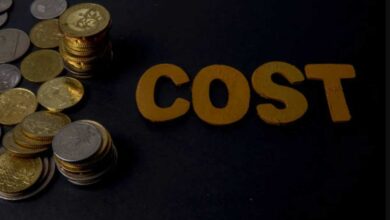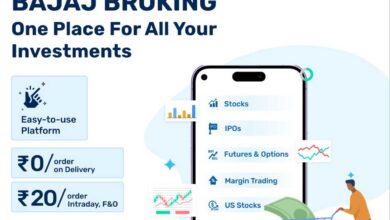Essential Risk Management Strategies for Successful Mergers and Acquisitions
Navigating Risks and Rewards in Business Mergers and Acquisitions

Mergers and acquisitions, also known as M&As, are when two companies join together to become one. This can help companies grow bigger and stronger. But, joining two companies can be tricky. It’s like putting together a big puzzle. To make sure everything fits well, we need to manage risks. Risk management means finding problems before they happen and fixing them. This helps the new company succeed.
M&As are big deals in the business world. Companies merge or acquire others to get more customers, new products, or enter new markets. However, these deals can also bring challenges. Money issues, different work cultures, and new legal rules can cause problems. If not handled well, these risks can hurt the company.
That’s why risk management is important in M&As. It helps find and fix problems early. For example, checking a company’s finances ensures there are no hidden debts. Looking at how people work helps blend two teams smoothly. By managing these risks, the new company can grow and be strong.
Understanding Mergers and Acquisitions
Mergers and acquisitions, or M&As, are when two companies come together to become one. There are different types of mergers. Sometimes, two companies that do the same thing join. This is called a horizontal merger. Other times, a company joins with a supplier or distributor. This is a vertical merger. There is also a type where companies in different industries merge. This is a conglomerate merger.
Many things drive companies to merge or acquire. They might want to grow faster, get new technology, or enter new markets. Merging can also help them save money by sharing resources. These reasons are called key drivers behind M&As.
But, M&As are not always easy. They can face many challenges. For example, combining different company cultures can be hard. Employees might work differently and have different rules. Financial issues can also arise. A company might have hidden debts or expenses. Legal problems can happen too, like dealing with new laws and regulations.
Understanding these aspects of M&As is important. It helps companies prepare better and face fewer problems. Knowing the types of mergers, key drivers, and common challenges makes the process smoother. This way, companies can succeed and grow stronger together.
Identifying Risks in Mergers and Acquisitions
Identifying risks in mergers and acquisitions (M&As) is like finding all the possible problems before two companies join together. This helps make sure everything goes smoothly. Let’s look at the different types of risks companies need to watch out for when they plan to merge or acquire another company.
Financial Risks
Financial risks in M&As are about money. Companies need to check if the other company has enough money or if it has debts. They look at things like profits, losses, and how much money the company owes. This helps make sure the merger or acquisition is a good financial decision.
Operational Risks
Operational risks are about how the company works every day. This includes things like how they make products or deliver services. Companies need to make sure their operations fit together well. They check if there will be any problems with how things are done.
Legal and Regulatory Risks
Legal and regulatory risks are about following the rules. Companies need to check if the other company follows all the laws. They look at things like contracts, patents, and lawsuits. This helps make sure there are no legal problems after the merger.
Cultural and Human Resources Risks
Cultural and human resources risks are about how people work together. Every company has its own rules and ways of doing things. When companies merge, they need to make sure everyone can work well together. They check if there will be any problems with different work cultures or if people will feel unhappy.
Market and Competitive Risks
Market and competitive risks are about the market and other companies. Companies need to check if the new company will face competition. They look at things like market trends and how other companies are doing. This helps make sure the new company can compete and grow in the market.
Read Also: A Comprehensive Guide: Corporate Events for Businesses
Risk Assessment and Due Diligence
Risk assessment and due diligence are very important in mergers and acquisitions (M&As). Due diligence means checking everything about the company you want to merge with or buy. It helps find any problems before they happen. This makes the merger or acquisition safer.
The Role of Due Diligence in M&As
Risk assessment and due diligence are very important in mergers and acquisitions (M&As). Due diligence means checking everything about the company you want to merge with or buy. It helps find any problems before they happen. This makes the merger or acquisition safer and smoother. It’s like doing a big homework assignment to understand everything about the new company.
Financial Due Diligence
First, there is financial due diligence. This means looking at all the money stuff. You check the company’s debts, profits, and expenses. You look at their bank statements and financial reports. This helps make sure the company is worth the price. It also helps you see if any money problems need fixing.
Legal Due Diligence
Next, there is legal due diligence. This means checking all the legal documents and contracts. You make sure the company follows the law and has no legal problems. You look at things like patents, employee contracts, and any lawsuits. This helps protect you from legal troubles after the merger.
Operational Due Diligence
Then, there is operational due diligence. This means looking at how the company works every day. You check their processes, equipment, and systems. You see how they make their products or deliver their services. This helps make sure the company runs smoothly and can keep doing so after the merger.
Cultural Due Diligence
Finally, there is cultural due diligence. This means understanding how people in the company work together. You check their values, rules, and habits. You talk to employees and see how they feel about their work. This helps make sure everyone can work well together after the merger. It’s like making sure two different puzzle pieces fit together perfectly.
Due diligence is like a big safety check. It finds and fixes problems early. This helps the new company grow strong and successful. By looking at financial, legal, operational, and cultural aspects, companies can avoid surprises and build a solid future together.
Developing a Risk Management Strategy
Developing a risk management strategy is very important when two companies come together. First, you need to set clear objectives and goals. This means deciding what you want to achieve and how you will do it. Next, you identify key stakeholders. These are the important people who will be involved in the merger or acquisition. They can be employees, managers, or even customers.
After that, you prioritize risks and make plans to deal with them. This is called risk prioritization and mitigation. You figure out which risks are the biggest and make plans to reduce or eliminate them. Finally, you set up communication and reporting mechanisms. This means making sure everyone knows what’s happening and can share information easily.
By following these steps, you create a strong risk management strategy. This helps the new company succeed and grow without facing big problems.
Implementing Risk Management Practices
Implementing risk management practices is crucial for the success of mergers and acquisitions (M&As). This process involves several key steps to ensure the new company can avoid major problems and grow strong.
Integrating Risk Management into the M&A Process
Implementing risk management practices is very important in mergers and acquisitions (M&As). First, you need to integrate risk management into the M&A process. This means checking for problems at every step. From the beginning, you look for risks and find ways to handle them. This helps make the whole process smoother and safer. You plan for risks right from the start.
Establishing a Risk Management Team
Next, you establish a risk management team. This team is made up of people who will look out for risks and find ways to fix them. They check the financial, legal, operational, and cultural aspects. They are like the safety experts of the merger. The team works together to make sure nothing is missed. They are always ready to tackle any issues that come up.
Continuous Monitoring and Adaptation
After that, you need continuous monitoring and adaptation. This means always watching for new risks. The team checks and rechecks everything. If they find a new problem, they change their plans to fix it. They adapt to new situations and make sure the merger stays on track. It’s like keeping an eye on a pot of soup to make sure it doesn’t boil over.
Contingency Planning and Crisis Management
Finally, you create contingency plans and crisis management. This is like having a backup plan if something goes wrong. If a big problem happens, the team knows what to do. They have plans ready to deal with emergencies. This helps the new company stay safe and recover quickly from any crisis.
By following these steps, you make the merger or acquisition much safer. You help the new company avoid big problems and succeed in the future. Risk management practices protect the company and ensure a smooth transition.
Conclusion
In conclusion, managing risks in mergers and acquisitions (M&As) is key to helping companies grow smoothly together. Businesses need to check finances, operations, legal issues, company cultures, and competition to avoid problems. These steps help create a strong foundation for success.
However, ignoring formal processes can lead to trouble. The Risks of Working Under the Table in any business deal include legal penalties, financial losses, and broken trust. Staying transparent and following proper steps is always the safest choice.
Looking ahead, risk management will continue to improve with new strategies and tools. It’s like learning new ways to win the game and play smarter every time!
For your future mergers or acquisitions, always plan carefully and make sure everyone works well together. If you have any questions or want to learn more, feel free to ask in the comments below. Don’t forget to share this helpful information with your friends who might find it useful too!
FAQs
What is the most common risk in M&As?
The most common risk in mergers and acquisitions (M&As) is financial risk. This includes issues like hidden debts, unexpected expenses, or overvalued assets that can affect the financial health of the new company.
How can companies effectively manage cultural differences in M&As?
Companies can manage cultural differences by promoting understanding and respect between teams from different companies. They can hold workshops, team-building activities, and cultural exchange programs to help employees learn about each other’s values and work styles.
What role does technology play in M&A risk management?
Technology plays a crucial role in M&A risk management by providing tools for due diligence, data analysis, and communication. It helps companies assess risks more accurately, monitor operations in real time, and implement security measures to protect sensitive information during the merger or acquisition process.







